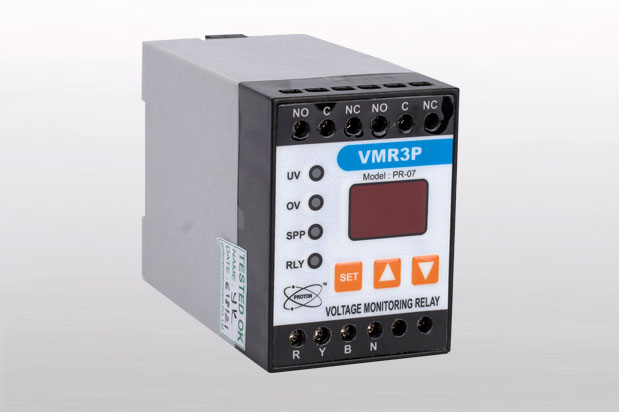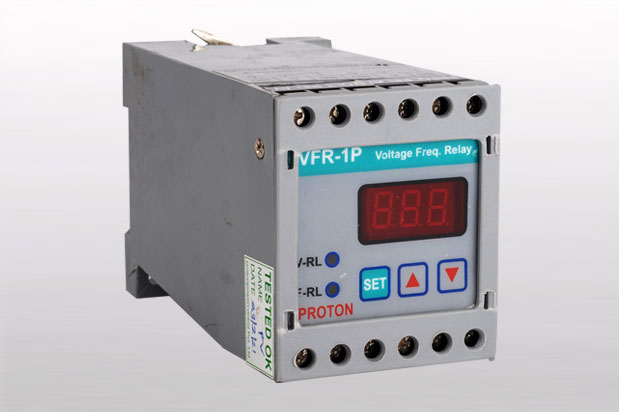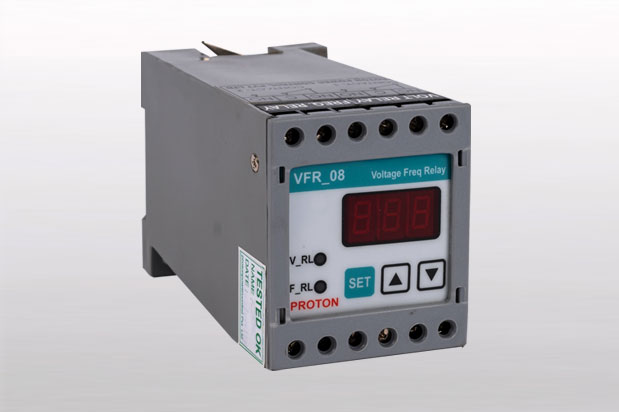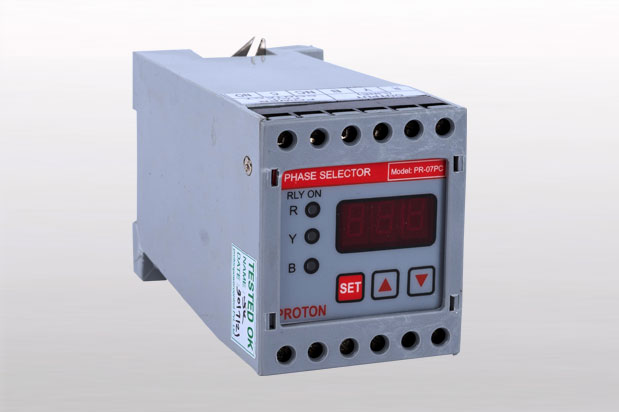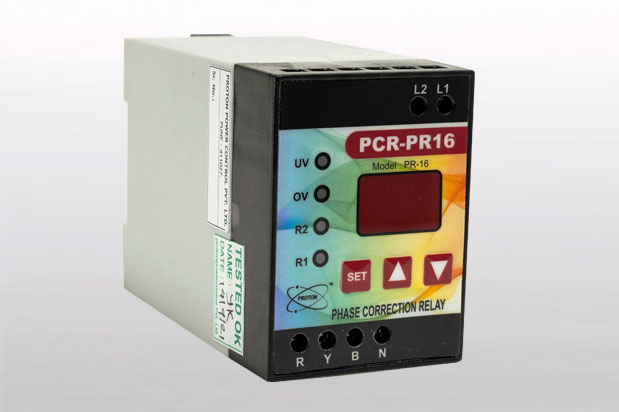
Motor Protection and Monitoring Relays
Motor Protection Relays, Motor Monitoring Relays, Voltage Monitoring Relays, Single And Three Phase Relays ( 1 And 3 Phase Relays ), Phase Selector Relays, Phase Correction Relays, Earth Fault Relays, Phase Reversal Relays, Line Voltage Monitors, Damper Relays, Protection Relays For HT LT Electrical Panels, Engine Safety Units, Voltage And Frequency Meters, Current Controllers, Temperature Controllers, Multi Function Meters, AC Power Monitors, Voltage Scanners, Overload Relays, Fire Panels, Water Heater Controllers, Automatic Voltage Regulating Relays, Manufacturer, Supplier, Exporter, Proton Power Control, Pune, Maharashtra, India
The first protective relays were electromagnetic devices, relying on coils operating on moving parts to provide detection of abnormal operating conditions such as over-current, over-voltage, reverse power flow, over- and under- frequency. Microprocessor-based digital Protection Relays now emulate the original devices, as well as providing types of protection and supervision impractical with electromechanical relays. In many cases a single microprocessor relay provides functions that would take two or more electromechanical devices. By combining several functions in one case, numerical relays also save capital cost and maintenance cost over electromechanical relays. However, due to their very long life span, tens of thousands of these "silent sentinels" are still protecting transmission lines and electrical apparatus all over the world. An important transmission line or generator unit will have cubicles dedicated to protection, with many individual electromechanical devices, or one or two microprocessor relays.


